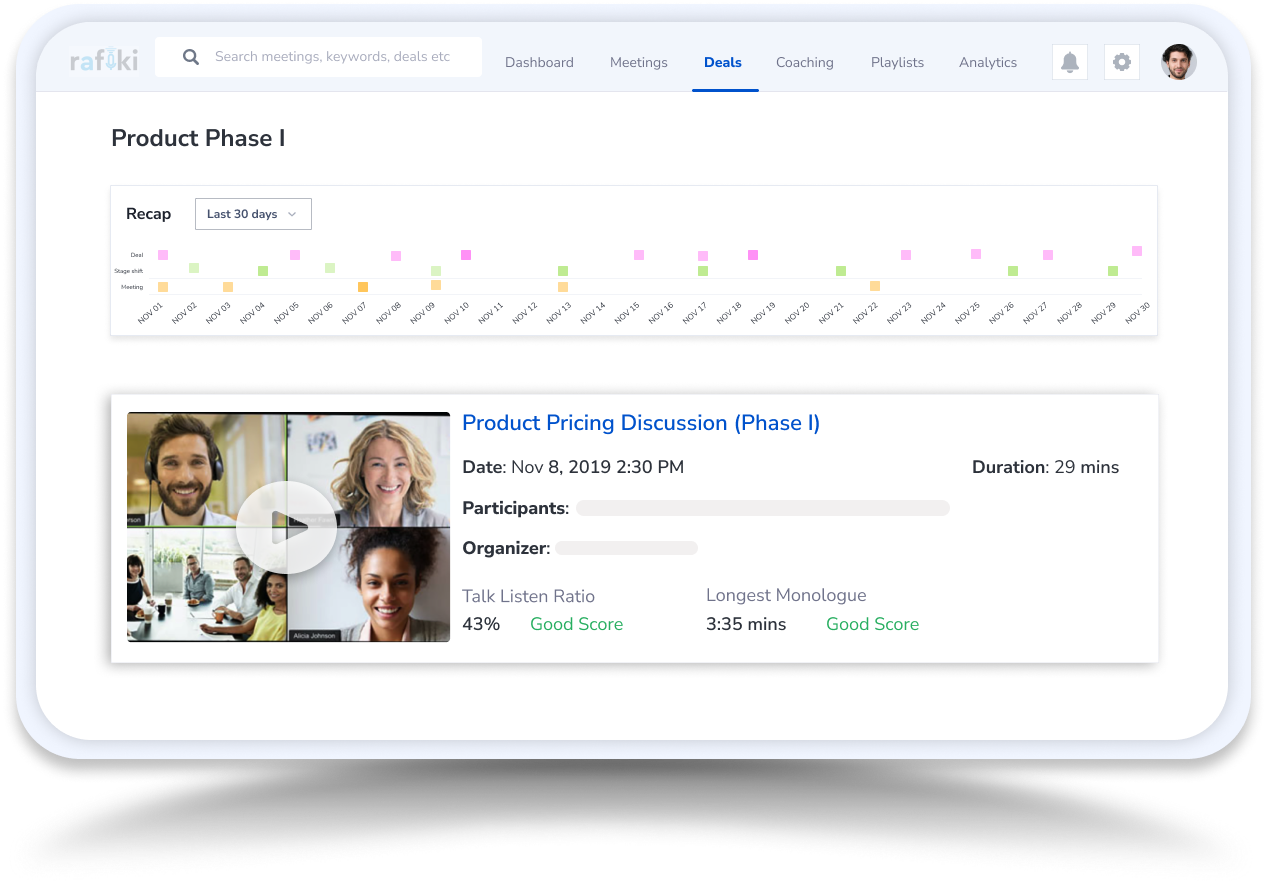Behind every successful organization, there is an efficient sales team.
The efficiency of a sales team is driven by how motivated the individual reps are.
Now the easiest way to motivate a sales team is by offering them earned commissions. When these commissions are tied to a quota, your sales team’s motivation is closely aligned to the business.
In this post, let us understand what a sales quota is, its definition, key objectives, types, and significance.
What is a sales quota?
A sales quota is a quantitative goal set by sales managers to measure salespeople’s performance, which, in turn, will help determine their compensation. Sales quota can also be set for an entire team, a territory, and a department. It is also set for a particular period, such as a month, quarter, or year. A smart sales manager ensures that the sales quota is set in such a way that it does not seem too high (making it unachievable) or too low (making the reps complacent).
What are the objectives of a sales quota?
Here are the key objectives of a sales quota –
- To stimulate sales effort and improve revenue for the organization.
- To determine a sales rep’s compensation and bonus and ensure that the entire process is done transparently.
- To ensure that the salesperson or the sales team adheres to the agreed-upon business metrics.
- To gather vital information as to where the organization is currently in relation to its goals.
- To identify the strengths and weaknesses of sales teams.
- To ensure that the team’s performance is in sync with the market.
What are the different types of quotas?
#1 Revenue Quota
This is probably the most basic type of sales quota and also the most common one followed by businesses. In this, the sales reps or the teams must sell to generate a certain amount of revenue within a specific time frame. It is usually set for a month or a quarter.
Example: Decan is a sales representative who has been set a monthly target of $20,000. His average sale is usually $4,000. So he needs to sell to at least 5 customers to meet his monthly sales quota.
When to use this quota:
- Revenue growth is your primary goal.
- You have a clear buyer persona.
- Your reps already have an optimal activity performance.
#2 Activity Quota
This type of sales quota revolves around sales-oriented tasks that the reps must do in a particular time frame. For instance, it can be making a set number of phone calls in a month or sending a fixed number of emails in a quarter. This type of quota has objectives ranging from client acquisition to booking meetings. It is usually set for junior SDRs and reps in their early stages of sales careers, where activities are highly correlated to their success.
Example: Adele is a sales representative who has been set a monthly target of 300 calls. So she has to make at least 10 calls per day, regardless of how many sales she makes.
When to use this quota:
- When you want to drive reps’ contribution to your organization’s growth, regardless of the outcome.
- When you want to coach inexperienced or struggling reps without punishing them monetarily.
#3 Volume Quota
This type of sales quota focuses on the number of products sold instead of the revenue or dollar value of the sale. This quota can be further split into product categories, business units, location, etc.
Example: Mark is a sales representative who has been set a quarterly selling volume of 25 cars. The showroom has cars ranging from $20,000 to $50,000. Mark has the liberty to sell any of these cars without worrying about the revenue or margin.
When to use this quota:
- When you are vying for market penetration.
- When you want to maximize value from sales.
#4 Profit Quota
This is almost similar to the revenue quota. The main difference is – the ‘revenue’ is replaced with profit as a criterion. This quota requires the sales reps to generate a certain amount of profit for the company by selling products (or services) at a certain price or selling only those with a high margin. This type of quota is ideal if your business has multiple price points for the same product or has multiple products with varying price points.
Example: David is a sales representative who has been asked to sell goods worth $5000. Apart from the revenue quota, he has also been set a profit quota that encourages him to sell only high-margin goods.
When to use this quota:
- When you have a high customer-acquisition cost.
- When you want to see how each sale is realistically contributing towards your business growth
#5 Forecast Quota
This type of quota is set based on predictions made from past results. While setting this type of quota, the manager must not only know past revenue details but must be able to decipher the different influences on those revenues, such as where they came from (channel) and how they affected the sales, etc. This type of quota is usually assigned to a team, business unit, or territory.
Example: Organization ABC clocked a revenue of $50,000 in Q4 last year. They want to boost their revenues by 10% this quarter. So the team has been asked to generate $55,000 this quarter.
When to use this quota:
- When you have a lot of sales data to deploy effectively
- When you are stepping into a new domain
- When you are launching a new product.
#6 Combination Quota
As the name suggests, a combination sales quota is a combination of multiple sales quotas. This type of sales quota offers reps several small, achievable milestones along with a sales roadmap for long-term success. This not only makes it easy to attain the sales quota but also aids in developing the reps’ diverse talents.
Example: Andrew, a sales representative, has been asked to make at least 200 calls in the upcoming month and sell at least 10 products.
When to use this quota:
- When you want to develop the diverse talents of your reps.
- When you are not sure about which sales quota will work best for your team.
Tracking of sales quotas
Most organizations make the mistake of setting up a sales quota and completely forgetting about it later. Sales managers must realize that it is also their responsibility to track the sales quota consistently and find ways to improve the processes and remove any bottlenecks if present.
Managers must also constantly communicate how close or far the reps are from attaining their individual sales quota. Your reps must have utmost clarity and accurate information all the time to know their progress in quota attainment.
If they are way ahead of the expected quota, reward them with a bonus. This will encourage them to put in even more effort. If they are falling behind, train them or give them the necessary assistance to catch up with the rest.
One of the most common metrics that help in tracking sales quota is Quota Attainment. Its formula is given by –
Quota Attainment = Actual Sales/ Target Sales
This metric gives you insights into the best-performing reps and how attainable the quotas are. For instance, if you have multiple reps or teams with low quota attainment, then it means you have set unrealistic goals. Similarly, if the value is quite high for many sales reps, it means your goals are very easy to attain.
How does Rafiki help with quota attainment?
The biggest enemy of quota attainment is unseen risk signals. Popular risk signals include a lack of decision-makers in the deal, low email or call velocity, no feedback, lack of discussion about the pricing, and competitor mentions. These are all indicators of likely lost deals. When you get a clear view of these signals, you can take appropriate actions, which, in turn, can help produce a well-oiled sales machine.
A tool like Gong or Chorus can identify these deal risks and can use them in deal forecasting and quota quantification. However, these tools cost hundreds of dollars per month and way beyond the budget of most small and medium-sized businesses.
Enter Rafiki, the AI-powered sales intelligence tool that has been carefully designed (and of course priced) for all SMBs out there. Not only Rafiki costs ways less, but also offers all the key features provided by the above pricey tools plus some customized features required to boost your quota attainment.
Click here to sign up for a free trial.




































